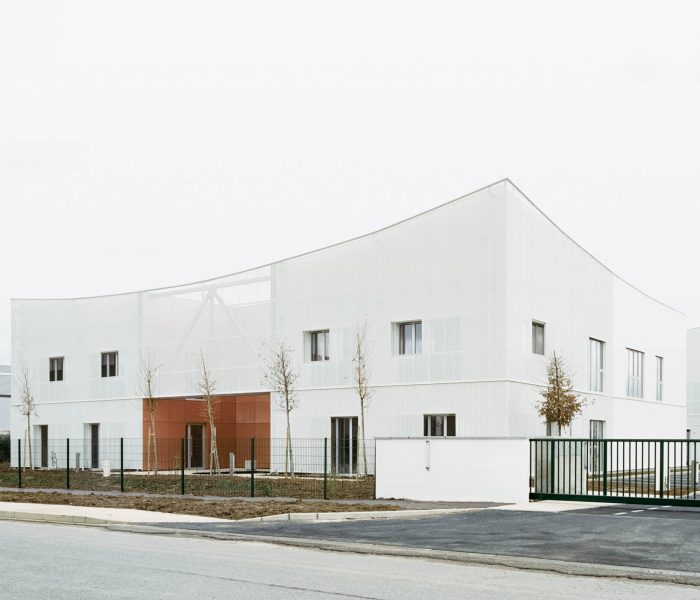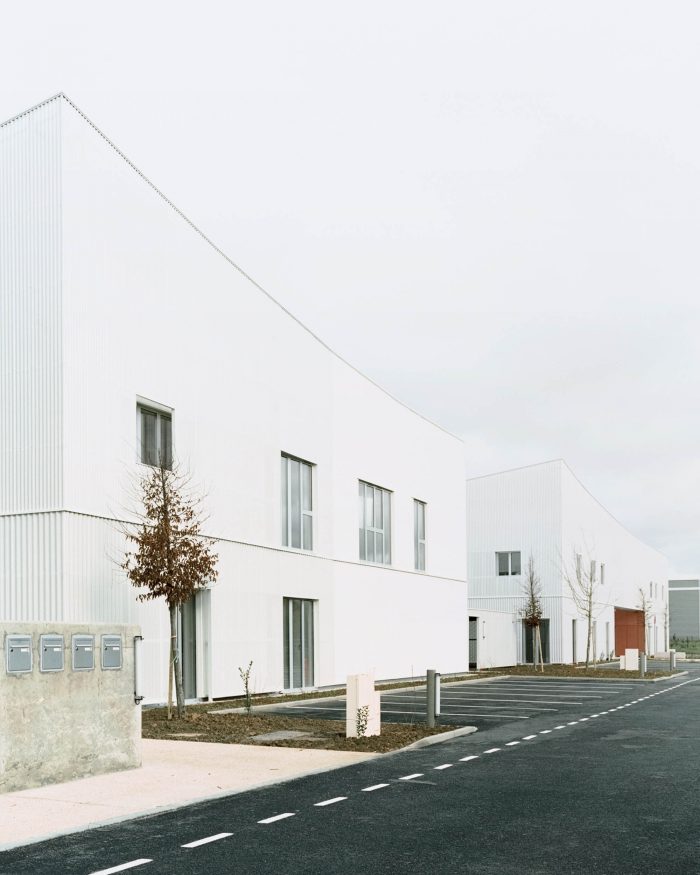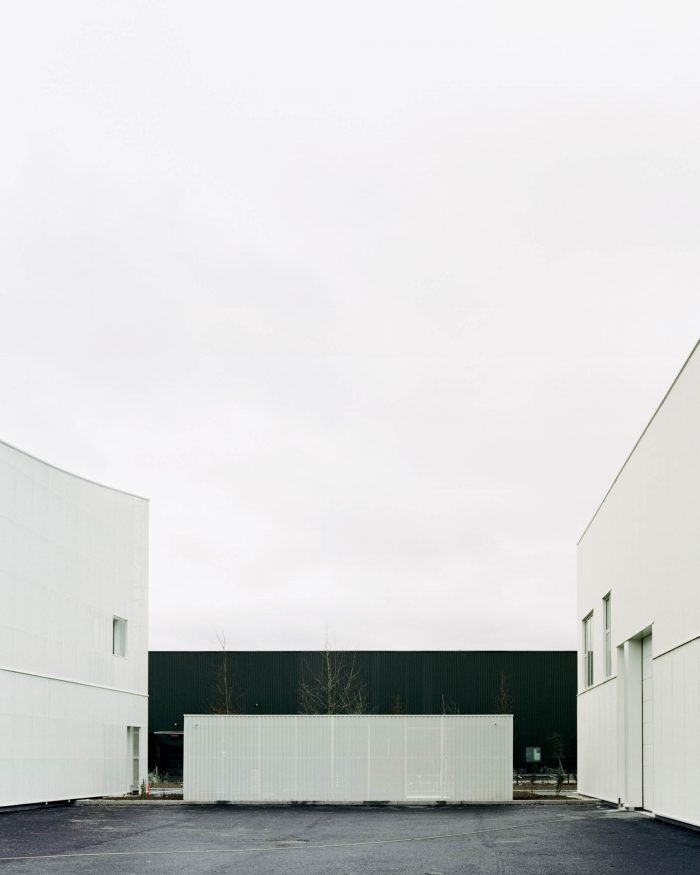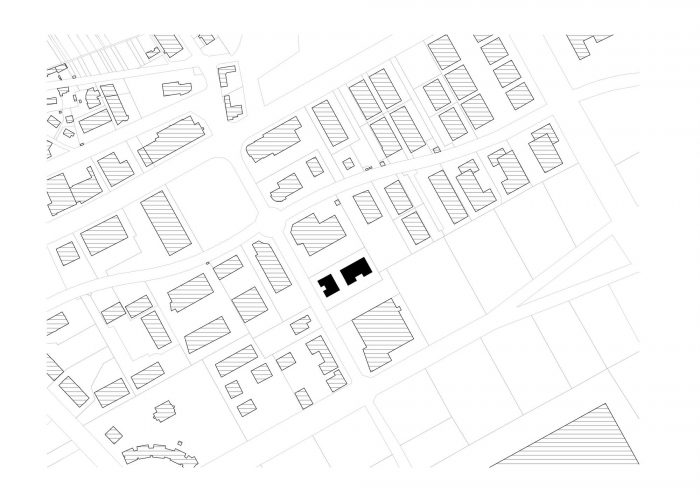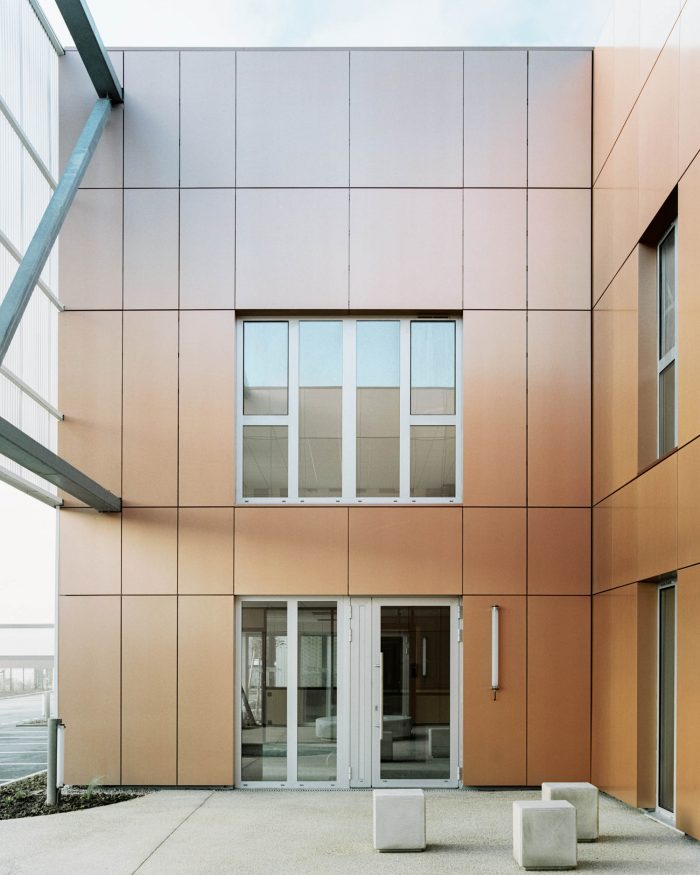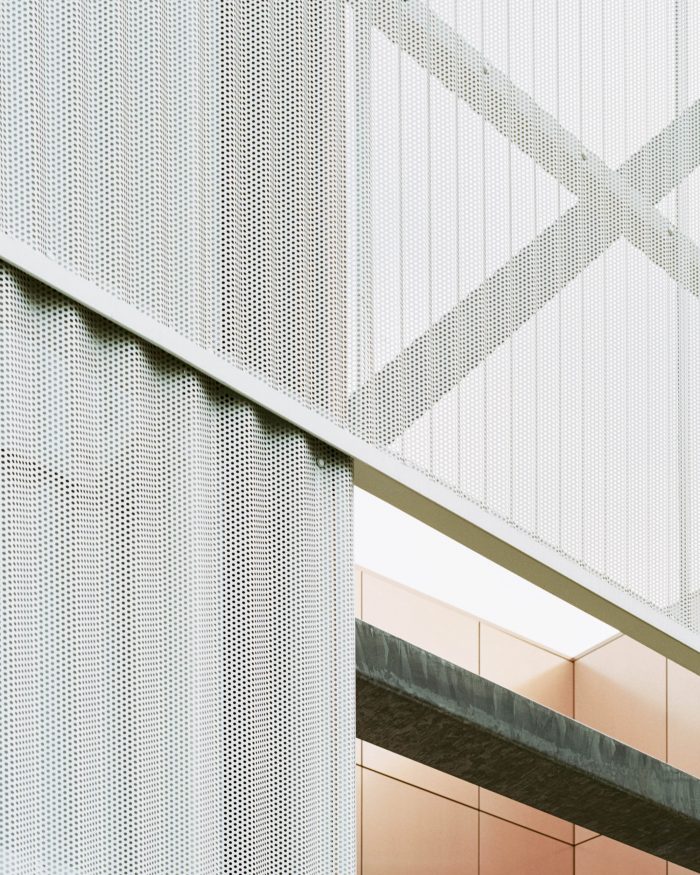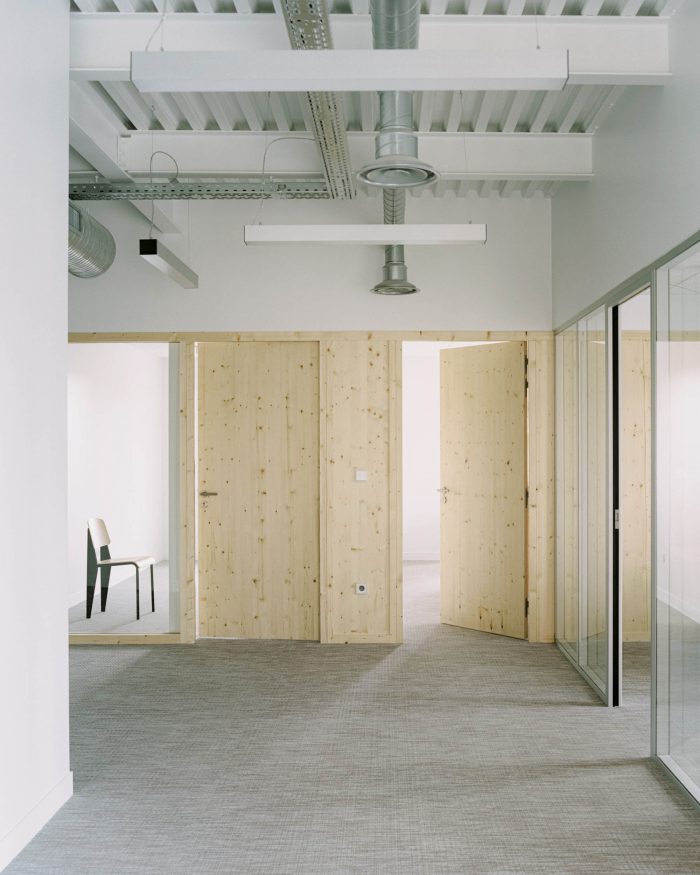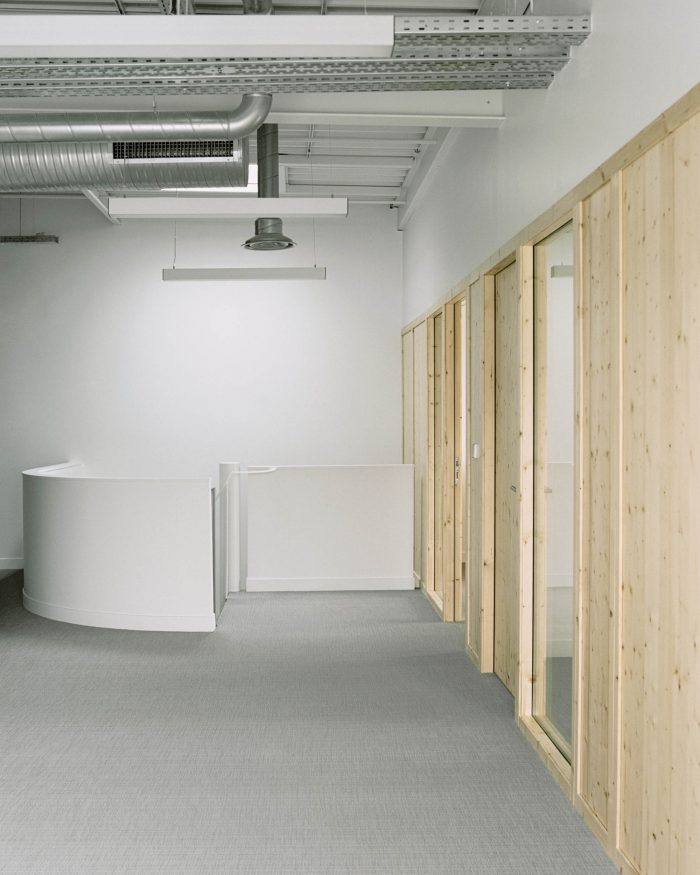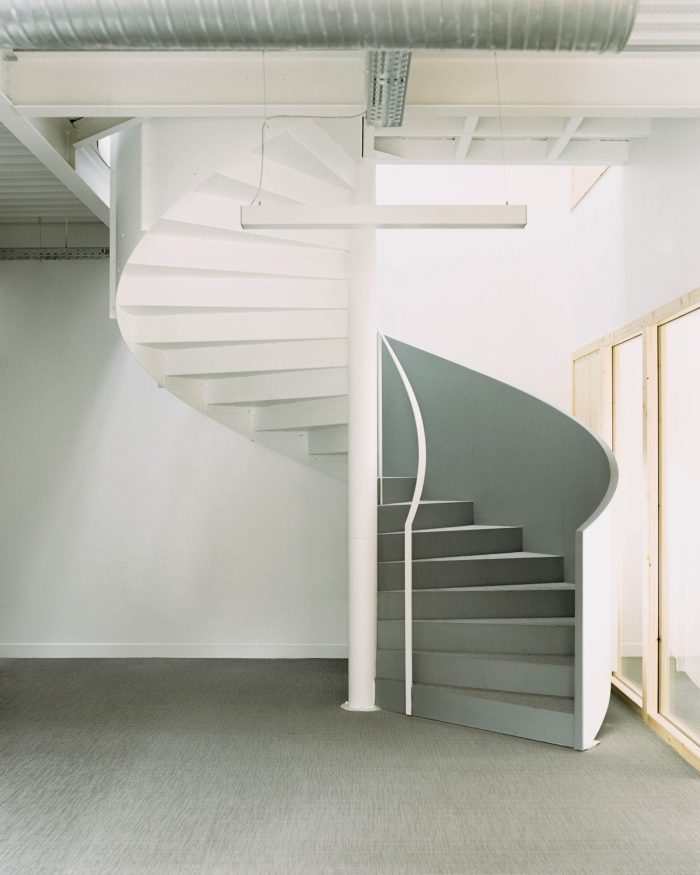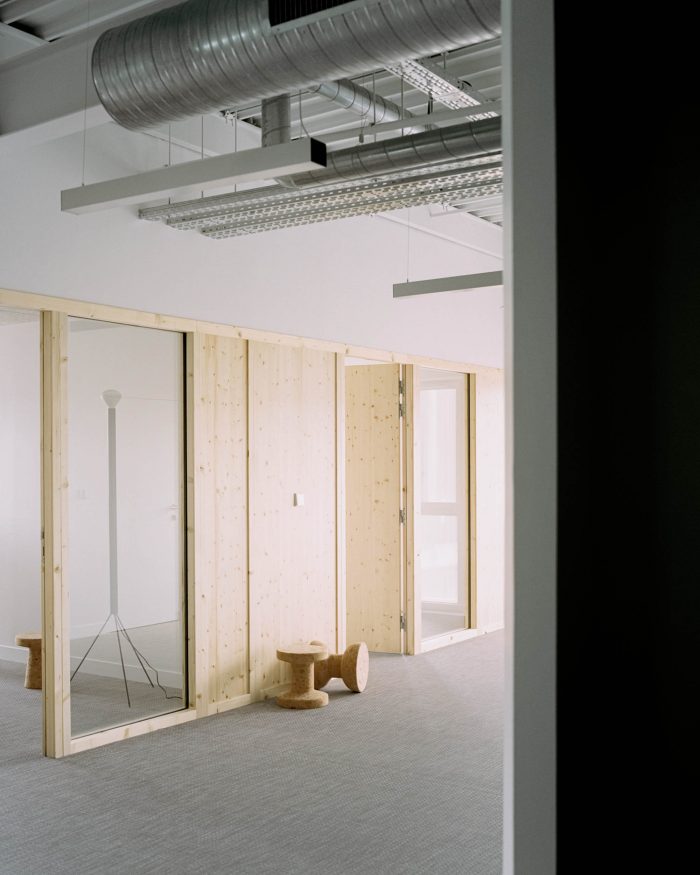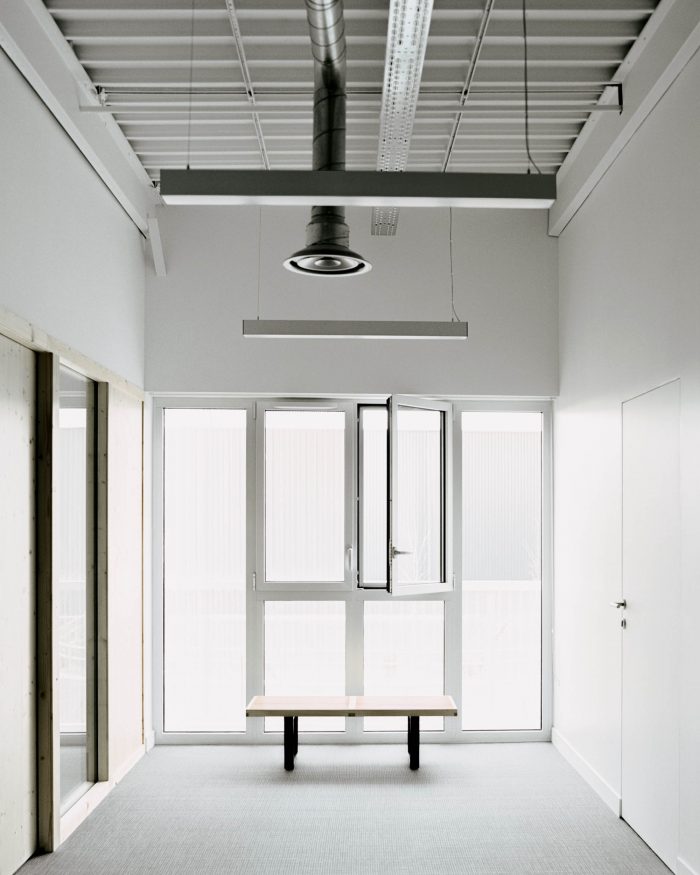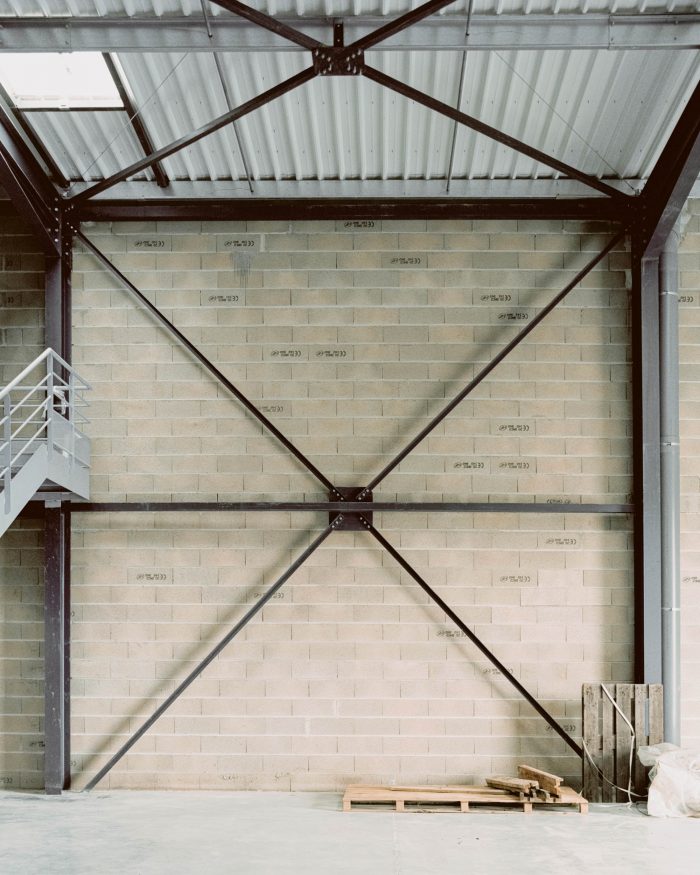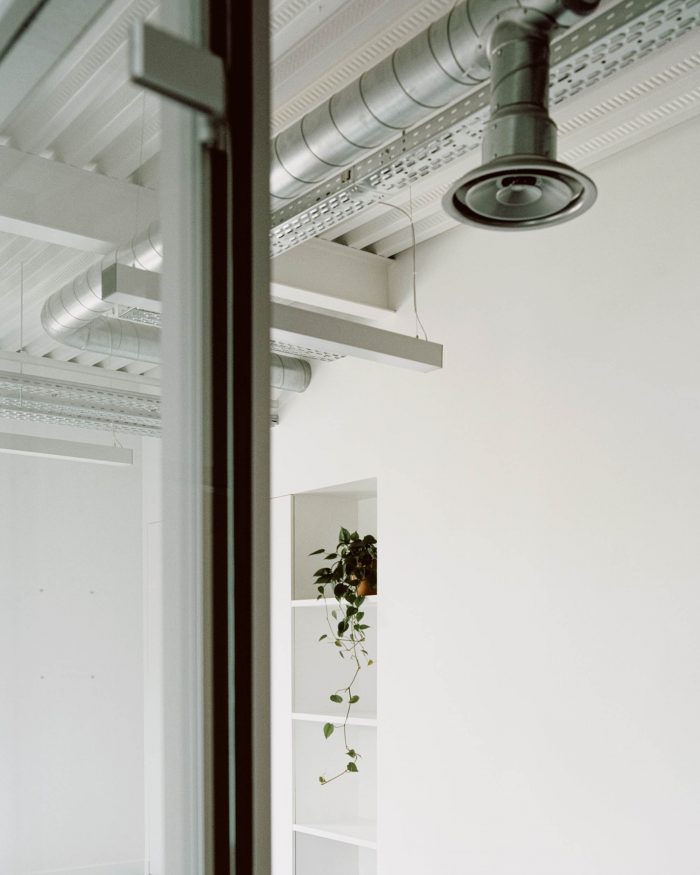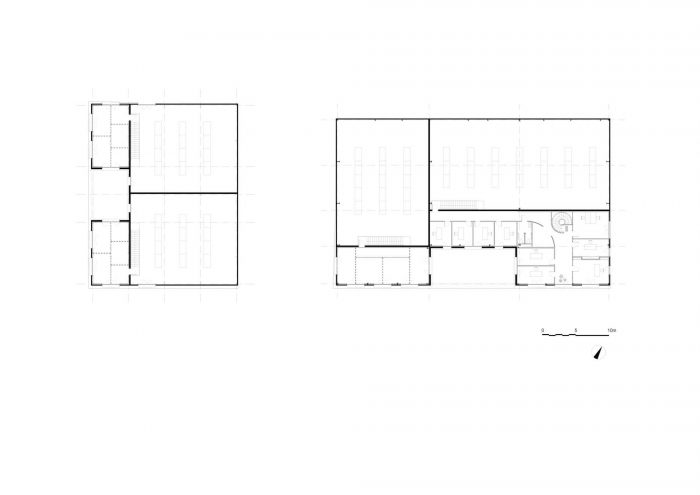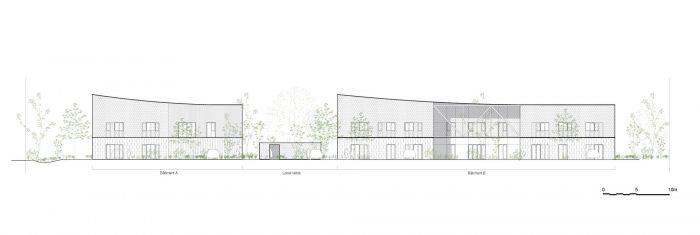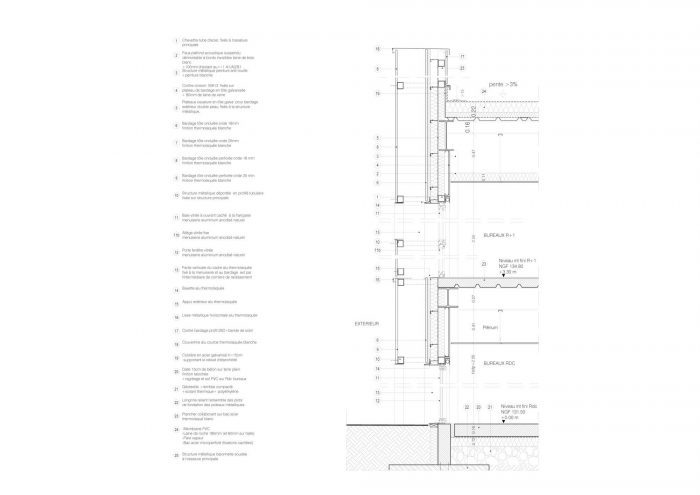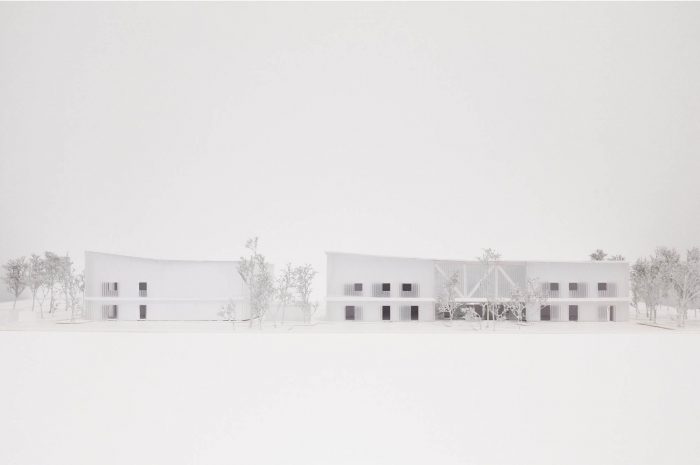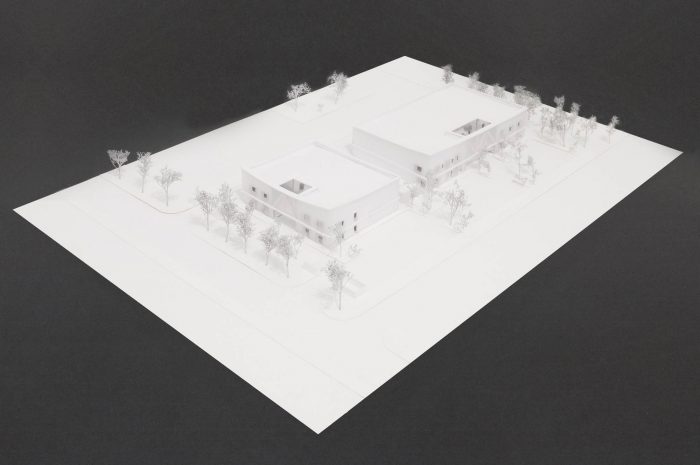该项目位于法国Bailly-Romainvilliers的Val d’Europe的 “国际企业园区”,在巴黎迪斯尼乐园建成后,该项目位于一个快速发展的单一功能经济活动区的中心。
Located in the “parc international d’entreprises” of Val d’Europe, in Bailly -Romainvilliers (FR), the project is in the heart of a rapidly growing monofunctional economic activity zone, following the establishment of Disneyland Paris.
建筑意图。考虑到这一背景,该项目必须在一个场地和区域内提出一个强有力的建筑身份,该场地和区域的建筑身份不明确,由模仿者组成。
Architectural intention. With this context in mind, the project had to put forward a strong architectural identity within a site and a region that has an indistinct architectural identity, made of pastiches.
建筑师决定在其建筑语言中加强和重新解释该场地的工业性质,试图与邻近的工厂展开对话。通过使用简单的工业材料,建筑师希望传达某种简单和谨慎。该项目对经济活动区的商业场所应该是什么样的原型提出质疑。这个想法很简单:建造一个具有成本效益和持久性的建筑,反映其功能,同时为用户提供一个高质量的工作场所。
The architects decided to enhance and re-interpret the industrial nature of the site within its architectural language, in an attempt to initiate a dialogue with the neighboring factories. By using simple and industrial materials, the architects wanted to convey a certain simplicity and discretion. The project questions the archetype of what business premises should look like in an economic activity zone. The idea is simple: build a cost-effective and long-lasting construction that reflects its function, whilst offering a high-quality workplace for its users.
该项目提供了两个不同的入口:行人和汽车入口位于场地西南,而货车则从西北入口进入场地。位于两座主楼之间的转弯区,允许货车在工地上机动行驶。这种分离赋予了安全性和使用的便利性,在场地上创造了两个独立的区域:场地的北部处理供应限制,而南部则回应了项目的办公需求。办公空间面向西部和南部,而存储空间和装载区面向北部和东部。
The project offers two distinct access points: the pedestrian and car entrance are located south-west of the site, while the lorries access the site from the north-west entrance. A turning area, located between the two main buildings, allows lorries to maneuver on the site. This dissociation grants security and ease of use, creating two separate areas on the site: the northern part of the site handles the supply constraints, while the southern part responds to the office needs of the program. Office spaces are oriented west and south, while the storage spaces and loading areas face north and east.
体积/物质性。为了打破它们的线性,外墙提供了凹陷的体量来标记入口,这些体量用对比的材料来装饰。为了保持体积的统一性,主立面的上部包层覆盖在这些体量上,允许形式的简单化,同时强调金属网的透明性,以过滤这些空间的阳光。屋顶的轻微弧度创造了一个更有活力的体量,并标志着该场地与周围地区的入口。
Volumetry / materiality. In order to break their linearity, the facades offer recessed volumes to mark the entrances, that are adorned with contrasting materiality. In order to preserve a volumetric unity, the upper part of the cladding of the main façade goes over these volumes, allowing the simplicity of form, while emphasizing the transparent subtlety of the metallic mesh that filters the sun on those spaces. The slight curvature of the roof creates a more dynamic volume and marks the entrance of the site from the surrounding areas.
建筑物的钢架结构使建筑师选择了具有类似材质的覆层。这两座建筑反映了它们的程序,并以简单的白色波纹钢包层作为装饰,是工业领域的典型。一楼和二楼之间的白色包层有一个波浪形的差异,创造了两层楼的轻微视觉变化,突出了地层的效果。同样的包层以穿孔的形式被用来创造一个金属网,包裹着建筑物,过滤太阳辐射,并从内部提供空灵的视野。建设性外墙和网状结构之间使用相同的波浪,使两个建筑群之间的过渡更加平滑。与此相反,天井用阳极氧化的盒状物作装饰,为入口空间带来温暖和对比。
The steel frame structure of the building led the architects to choose a cladding with similar materiality. The two buildings reflect their program and are adorned with a simple white corrugated steel cladding, typical in the industrial field. A wave difference in the white cladding, between the ground and the first floor, creates a slight visual variation of the two stories and accentuates the stratum effect. The same cladding is used in perforated form to create a metallic mesh that wraps the buildings, filters the solar gain, and offers ethereal views from the inside. The use of the same wave between the constructive facade and the mesh allows a smooth transition between the two complexes. In contrast, the patios are cladded with anodized cassettes, bringing warmth and contrast to the entrance spaces.
内部。内部遵循最初的表现形式,揭示了建筑的构造系统:合作的金属模板和钢屋顶是可见的,还有钢框架结构。电气和通风系统是可见的,除了办公室,那里使用了白色的木羊毛天花板来创造一个声学上舒适的工作空间。带有红色暗示的编织乙烯基地板与木材和玻璃隔断相结合,完成了整个色调。
Interior. The interior follows the initial manifest and reveals the constructive system of the building: the collaborative metal form-slab and the steel roof are visible, as well as the steel frame structure. The electrical and ventilation systems are visible, except in the offices, where a white wood wool ceiling is used to create an acoustically comfortable workspace. Woven vinyl flooring with red hints combined with timber and glass partitions complete the palette.
Architects: Agathe Marimbert Architecte, NAED bureau d’architecture
Area: 1800 m²
Year: 2021
Photographs: Simone Bossi
Manufacturers: STAC BOND, Bolon, Sfel, Arcelor Mittal
Lead Architect:Sébastien Gnaedig
Associate Architect:Agathe Marimbert
Mep Engineer:B52 ufficio
Landscape Architect:Sven Bienfait
City:Bailly-Romainvilliers
Country:France


